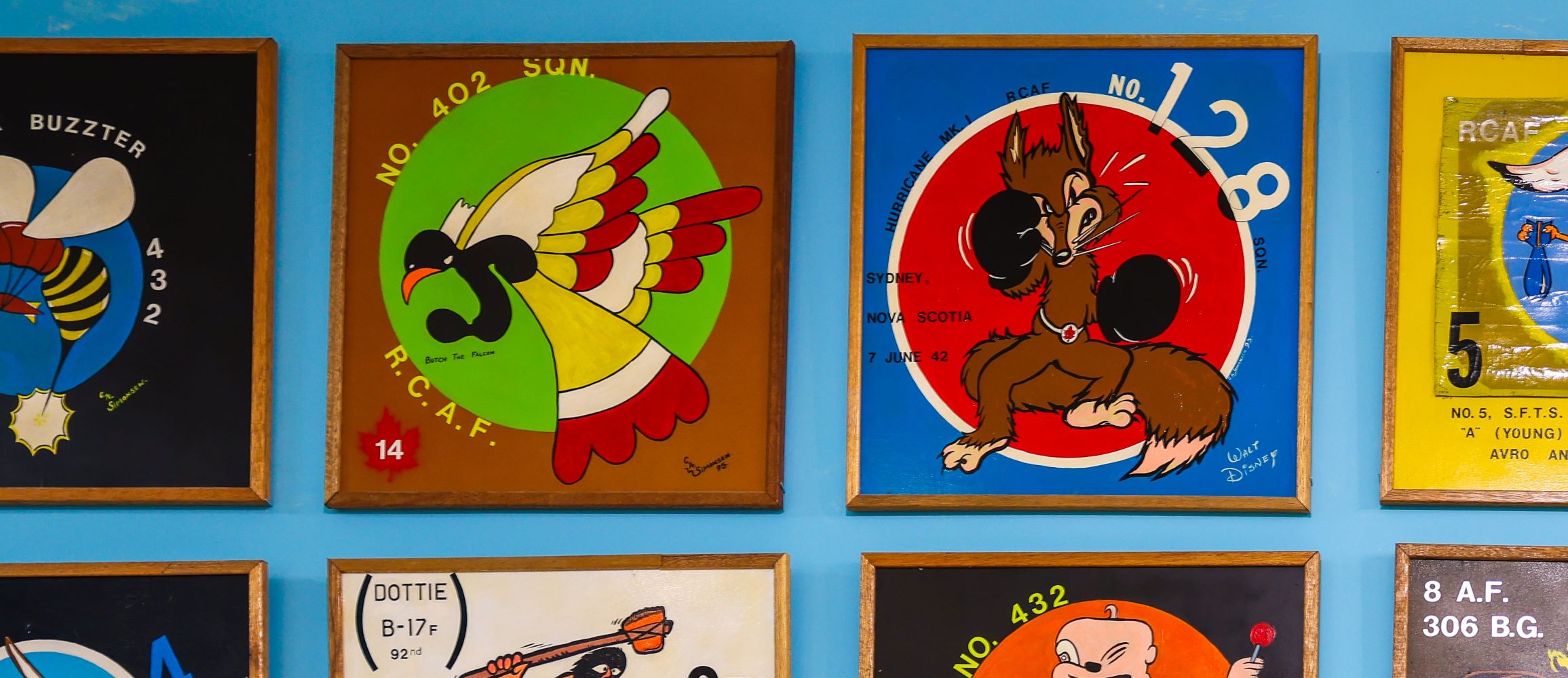Hitler looks flummoxed as a lightning bolt from a low-hanging cloud strikes him on the backside. He has a gloved hand raised up like he’s at a hip hop concert. The other hand, ungloved, lies limply by his side. The visual is captioned “De Fuhrer’s Fate.”
This was my first glimpse of nose art. Immediately, I knew I was looking at something special. It felt like I had been hit on the head like a pestle hits mortar.
Yep, nose art is treasure.
Nose art refers to visuals painted on the fuselage of a warplane, usually close to its nose. The art form gained prominence in the First World War but rose to its peak in the Second World War.
Why did I have such a visceral response to nose art?
Well, think of it this way. Imagine some random kid going through a list of the most viral memes on the internet a hundred years from now. Imagine what he would discover about us. Our sense of humor. Our joy, our pain, our fears, our confidence.
It will be more than a glimpse of the past. It will be a trip into our collective minds, an experience of our collective psyche. It will be a history lesson well learned.
This is why I was so excited to see WWII nose art at the Nose Creek Valley Museum. I couldn’t wait to see what the art would reveal about the men who flew these planes.
According to some of the books I read in the museum, the first Canadian warplanes to have anything remotely close to nose art were the planes of the #10 Naval Squadron in April 1917. The #10 Naval Squadron was comprised of Flight Commander Raymond Collishaw and four other Canadian pilots. They painted their planes different colors and picked names that began with the word“Black” for each aircraft.
I found that interesting because it reminded me of Voltron, an animated TV series I used to watch in the rustic city of Ibadan, Southwest Nigeria, back in the 80s. Voltron is an impossible-to-defeat giant robot formed by combining five more miniature robots (lions). The lions had names that corresponded to colours.
I’m trying to say that the #10 squadron didn’t see itself as a group of sorry, war-scarred, scared-to-death pilots defeated by war and cowed by violence. As far as they were concerned, they were dashing, courageous, heroic characters.
Why else did Ellis Reid, a member of the Squadron and from the very Canadian city of Toronto, choose to call his plane “The Black Roger”? Or Gerry Nash of Hamilton, Black Sheep? The Squadron went on to destroy “over 87 enemy aircraft in June and July 1917.”
This positive self-image, this consciousness is why nose art evolved to be the phenomenon it became in the second world war. It also explains why the Allies won WWII, but that’s another story.
At first, nose art was used to mark planes and identify friends from foes, but it evolved into something much more powerful. Nose Art started to give each plane a personality, like a tattoo on your face or graffiti in the hood.
The planes with nose art became an extension of the pilot’s personality. The image on a plane could reference the pilot’s hobby, personal life, values and beliefs or something to mock the enemy. Hitler was a popular target. I imagine some of the planes would carry images that were a giant flying middle finger to Hitler and the Nazis.
The artists in the Second World War were mainly non-combatants, which also influenced their art. The images they created were generally relaxed and humorous. They were good-luck charms, and they boosted morale so much that they became the memes of WWII.
Pinup girls and other images of women were prevalent. Walt Disney characters were featured often as well.
Given that the vast majority of WW II aircrew were in their very early twenties, and many even flew wartime operations while in their teens, this isn’t very surprising.
I found it surprising, however, how quickly authority figures jumped on nose art and encouraged its use.
There is a story about how a new Commanding Officer named Douglas Bader boosted the low morale of a Canadian Squadron fighting for the Royal Air Force (RAF).
Bader must have been a true “badass” because he not only encouraged nose art, he designed some himself. The story even says he did all this after losing his legs in the war!
The bravery and sacrifice of his Canadian men and many other foreigners played a crucial role in changing RAF regulations to officially recognize nose art.
After the Battle of Britain in 1940, the British decided to start tolerating the foreign squadrons. Their nose art and RAF regulations were modified to officially allow new Allied fighter squadrons to paint national insignia on their aircraft, provided it will not exceed 20 square inches in total. The “insignia” in the pilot position would later move towards the nose of the aircraft and thus began the golden age of aircraft nose art. It would last till 1945.
Almost 80 years later, I could still feel the courage and optimism that inspired the art as I stared up at the nose art displayed at the Nose Creek Valley Museum. The pieces stared back at me defiantly, daring me to uncover the stories behind their creation and understand the people that initiated their design.
Even though I will never fully know everything about these individuals, through their art, I have been able to take a brief journey into the collective psyche of a generation of conquerors. This generation stared boldly into the abyss and came out victorious.
We will do well to learn from them.





